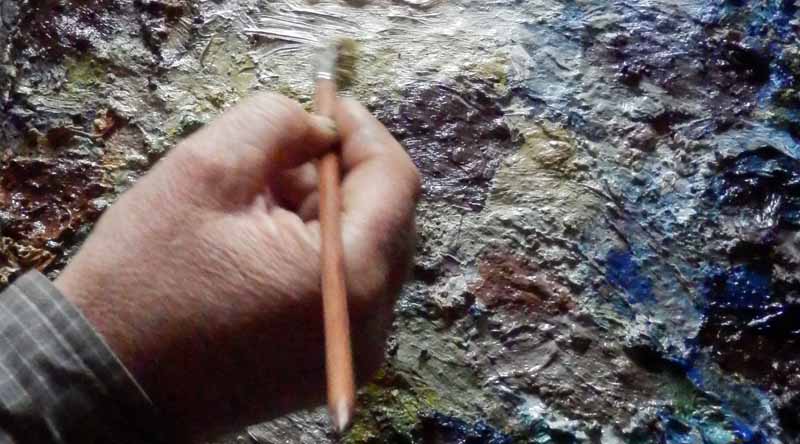 Classification : A180-A200-B130-B140-C130-D110 Classification : A180-A200-B130-B140-C130-D110
Le texte explicatif associé à chacun des quatre critères analysés (A - formalisme, B - matérialité, C - investissement, D - communication) positionne l'oeuvre de l'artiste dans l'histoire de l'art en rappelant éventuellement les courants artistiques auxquels elle se rattache, ou les noms des artistes illustres s'étant exprimés dans une approche voisine.
A : FORMALISME
• Le premier critère porte sur le formalisme de l'oeuvre : que voit-on quand on regarde une oeuvre, quel type de formalisation se donne à voir de prime abord ? Est-ce plutôt abstrait, plutôt figuratif, plutôt..., etc (classé du plus "abstrait" au plus "réaliste").?
A180 : Abstrait non construit / "Informel", matières / taches
Du plus "Nuagiste" au plus "Matièriste", tous les jeux sur les subtilités de la matière picturale et ses espaces colorés (Zao Wou Ki, Sam Francis, Ben-Rath, …).
A200 : Abstrait non construit / "Informel", gestuel
du plus "Lyrique" au presque "scriptural", le geste entre ex-pression interne, marque d'une ipséité, et tentative de communication (J.PollockHans Hartung, Franz Kline, Georges Mathieu, Jean Messagier, …).B : MATERIALITE
• Le second critère porte sur la matérialité de ce qui est donné à voir. S'agit-il de pur concept, de jeu de matières, d'objet détourné etc. (classé du plus "immatériel" au plus "réel") ?
B130 : en matérialité non structurée légère (délicatesse des touches)
couleurs et matières sont plus ou moins estompées, diluées, évanescentes, jouant sur leurs transparences (Zao Wou Ki, Olivier Debré, …).
B140 : en matérialité non structurée avec prééminence des couleurs
par leur force intrinsèque (Mondrian, ... ), leur symbolisme historique, social (El Lissitzky, ...), etc., les couleurs sont ici le plus important.C : INVESTISSEMENT CORPS / ESPRIT
• Le troisième critère porte sur « l'investissement » de l'artiste dans son oeuvre. Avec quel ratio Corps / Esprit, l'artiste s'investit-il dans son oeuvre ? Classé du plus "intellectuel" (p.ex. "l'Art Conceptuel", ...) au plus "physique" (p.ex. le "Body Art", ...).
C130 : plus vers l'intellectualité / l'essence, travail intérieur axé plus vers l'introspectif
paysages intérieurs, émotions, sensations (Arpad Szenes, ...), sérénité ("Monochromes" de Yves Klein, ...), équilibre ("mandalas" de Augustin Lesage ou Adolf Wölfli, ...), mémoire ("les boîtes" de Boltanski, ...). Pour la recherche d'un équilibre "ressenti".D : COMMUNICATION
• Le quatrième critère porte sur l'aspect « communication » : L'artiste a t-il une volonté délibérée de communiquer à travers ses oeuvres un message quelconque ? (classé du plus "spiritualiste" au plus "sociétal").
D110 : via le signifié avec des spiritualités diverses, ou du religieux moins marqué
(de Barnett Newman à Mark Rothko, de Roman Opalka à Arnulf Rainer, ...).
|

